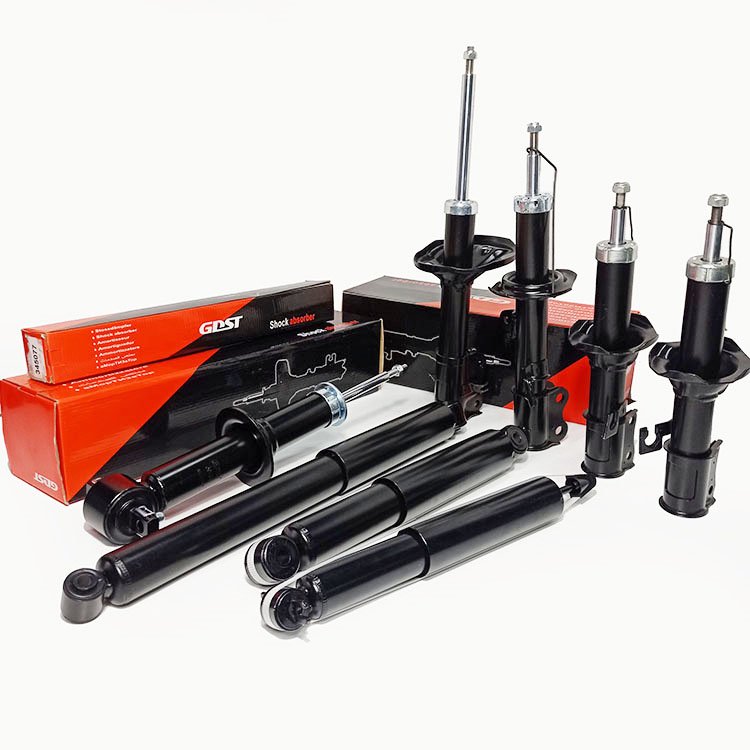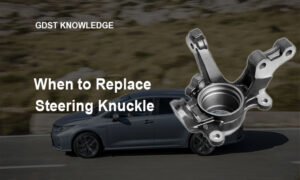What are gas shock absorbers?

Gas shock absorbers, also known as gas struts, are hydraulic devices that are designed to dampen and absorb the shock and vibrations caused by road irregularities, bumps, and other driving conditions. They are commonly used in vehicles such as cars, trucks, and motorcycles to improve ride quality and handling.
Gas shock absorbers work by using compressed gas, typically nitrogen, to dampen the motion of a piston that is attached to a piston rod. As the shock absorber moves in response to the vehicle’s motion, the gas inside the shock absorber compresses and expands to provide resistance to the motion of the piston. This resistance helps to reduce the intensity of the shocks and vibrations transmitted to the vehicle’s body and suspension system.
Gas shock absorbers are often preferred over traditional hydraulic shock absorbers because they provide more consistent damping performance, are less susceptible to fluid leakage and foaming, and offer better resistance to high-frequency vibrations. Additionally, they can be designed to be self-leveling, which helps to maintain a consistent ride height and stability even when the vehicle is carrying heavy loads or traveling over uneven terrain.
What are oil shock absorbers?

Oil shock absorbers, also known as hydraulic shock absorbers, are mechanical devices designed to absorb and dampen shock and vibration in a vehicle’s suspension system. They are typically located between the frame of the vehicle and the wheels, and their main purpose is to improve ride comfort and handling while reducing wear and tear on other components of the suspension system.
Oil shock absorbers work by using hydraulic fluid to dampen the movement of the suspension system. When the suspension compresses or rebounds, the hydraulic fluid is forced through small orifices in the shock absorber, creating resistance and slowing down the movement of the suspension. This helps to prevent the vehicle from bouncing or swaying excessively, providing a smoother, more controlled ride.
There are several types of oil shock absorbers, including twin-tube, monotube, and Coilover shocks. Each type has its own unique design and features, but they all work on the same basic principle of using hydraulic fluid to dampen shock and vibration in the suspension system.
Are gas or oil shock absorbers better?

Gas and oil shock absorbers are both effective at dampening the vibrations and bumps that occur during vehicle travel. However, the design and performance of each type of shock absorber differ, and which one is “better” depends on the specific needs and preferences of the driver.
Gas shock absorbers, also known as gas-charged shock absorbers, use pressurized nitrogen gas to help dampen vibrations. The gas provides a more stable and consistent resistance to movement, which can be beneficial for high-performance vehicles or vehicles used for heavy-duty applications. Gas shock absorbers can also provide a quicker response time, which can be useful in certain driving situations.
Oil shock absorbers, also known as hydraulic shock absorbers, use oil to dampen vibrations. The oil provides a smoother and more consistent resistance to movement, which can result in a smoother ride. Oil shock absorbers can also be more affordable than gas shock absorbers and are often used in more conventional vehicles.
Ultimately, the choice between gas and oil shock absorbers depends on the specific needs and preferences of the driver. If you prioritize performance and quick response time, gas shock absorbers may be a better choice. If you prioritize a smoother ride and affordability, oil shock absorbers may be a better choice. It is always recommended to consult a professional mechanic or suspension specialist to determine the best type of shock absorber for your vehicle.
Do gas shock absorbers leak oil?

Gas shock absorbers can potentially leak oil, but it is not a common occurrence. The function of a shock absorber is to absorb and dampen the movement of the suspension, helping to provide a smooth ride and stable handling.
Gas shock absorbers contain a piston that moves through oil inside the shock absorber cylinder, and the movement of the piston generates resistance that helps control the movement of the suspension. Some gas shock absorbers are designed to use pressurized gas to help regulate the flow of oil, which can improve the performance of the shock absorber.
Over time, the seals and other components of the shock absorber can wear or become damaged, and this can lead to oil leaking out of the shock absorber. However, the pressurized gas inside the shock absorber can also help prevent oil leaks by keeping the oil under pressure.
If you suspect that your shock absorbers are leaking oil, it is important to have them inspected and replaced if necessary by a qualified mechanic. A leaky shock absorber can negatively affect your vehicle’s handling and safety, so it is important to address any issues promptly.
High-quality shock absorbers VS Poor-quality shock absorbers

A shock absorber is a critical component of a vehicle’s suspension system that helps absorb shocks and vibrations caused by uneven road surfaces. The primary function of a shock absorber is to keep the tires in contact with the road, providing better handling, stability, and comfort.
The difference between a high-quality shock absorber and a poor-quality shock absorber lies in the design, materials used and manufacturing process. A high-quality shock absorber is designed to provide consistent damping performance, withstand high stress, and offer a longer service life.
Here are some of the differences between a high-quality shock absorber and a poor-quality shock absorber:
- Design: High-quality shock absorbers are designed with precision to provide optimal damping performance for a specific vehicle model. Poor-quality shock absorbers have a generic design that may not provide the same level of performance or fitment.
High-Quality shock absorbers: the diameter of the piston rod is 30mm; the thickness of the front shock absorber tube is 2.0-2.5mm; the thickness of the rear shock absorber tube is 1.0-1.5mm.
Poor-Quality shock absorbers: the diameter of the piston rod is 27mm; the thickness of the front shock absorber tube is 1.8-1.5mm; the thickness of the rear shock absorber tube is 0.8-1.2mm.
Due to cutting corners in their design, Poor quality shock absorbers have a reduced service life and lower force values.
- Materials: High-quality shock absorbers use high-grade materials like forged aluminum or steel for the body and piston, high-quality seals, and advanced damping fluids. Poor-quality shock absorbers may use substandard materials made from used tires, easily broken and short-lived that are prone to wear and tear, leading to premature failure.
- Manufacturing: High-quality shock absorbers are manufactured with advanced processes that ensure consistent quality and performance. Poor-quality shock absorbers may be produced with inferior processes that lead to inconsistencies and reduced durability.
- Price: High-quality shock absorbers are more expensive due to their higher-quality materials and manufacturing processes. Poor-quality shock absorbers are cheaper, but they may not provide the same level of performance or longevity.
In summary, a high-quality shock absorber will provide better handling, stability, and comfort while also lasting longer and providing consistent performance over time. A poor-quality shock absorber may be cheaper, but it may not provide the same level of performance or reliability. Ultimately, investing in a high-quality shock absorber is the best choice for optimal vehicle performance and safety.






